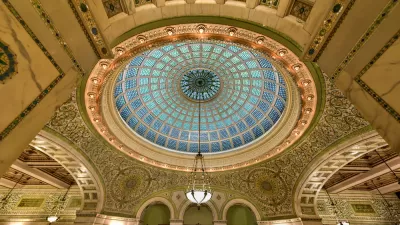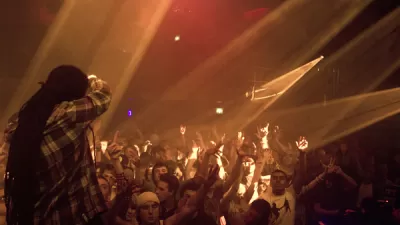Peter Aspden celebrates the symbolism communicated in the transformation of the detritus of industry into loci for cultural regeneration, as represented by the Tate Modern and its planned expansion.
Aspden uses the transformation of London's Bankside power station into the Tate Modern art museum, and the coming debut of first stage of the gallery's expansion into the former power station's two giant oil tanks, to make a larger point about artists' "use the debris of a fallen age as props with which to sketch out new tomorrows."
Aspden celebrates the project's symbolic connection to Britain's wider post-industrial shift, and the ability of artists to see opportunities for regrowth, "Where we see decay and disorder."
"If Britain's past was based on the muscular manufacture of things, its future seems increasingly entwined with the ethereal flow of ideas. While that may understandably provoke a feeling of insecurity, it is no bad thing. The future belongs to supple minds, not stretched sinews. Britain did well as an industrial powerhouse. But we are in a different place now. To be a world leader in culture is to promote openness, tolerance, fresh thinking."
FULL STORY: When industry gives way to art

Planetizen Federal Action Tracker
A weekly monitor of how Trump’s orders and actions are impacting planners and planning in America.

Maui's Vacation Rental Debate Turns Ugly
Verbal attacks, misinformation campaigns and fistfights plague a high-stakes debate to convert thousands of vacation rentals into long-term housing.

San Francisco Suspends Traffic Calming Amidst Record Deaths
Citing “a challenging fiscal landscape,” the city will cease the program on the heels of 42 traffic deaths, including 24 pedestrians.

Amtrak Rolls Out New Orleans to Alabama “Mardi Gras” Train
The new service will operate morning and evening departures between Mobile and New Orleans.

The Subversive Car-Free Guide to Trump's Great American Road Trip
Car-free ways to access Chicagoland’s best tourist attractions.

San Antonio and Austin are Fusing Into one Massive Megaregion
The region spanning the two central Texas cities is growing fast, posing challenges for local infrastructure and water supplies.
Urban Design for Planners 1: Software Tools
This six-course series explores essential urban design concepts using open source software and equips planners with the tools they need to participate fully in the urban design process.
Planning for Universal Design
Learn the tools for implementing Universal Design in planning regulations.
Heyer Gruel & Associates PA
JM Goldson LLC
Custer County Colorado
City of Camden Redevelopment Agency
City of Astoria
Transportation Research & Education Center (TREC) at Portland State University
Jefferson Parish Government
Camden Redevelopment Agency
City of Claremont




























